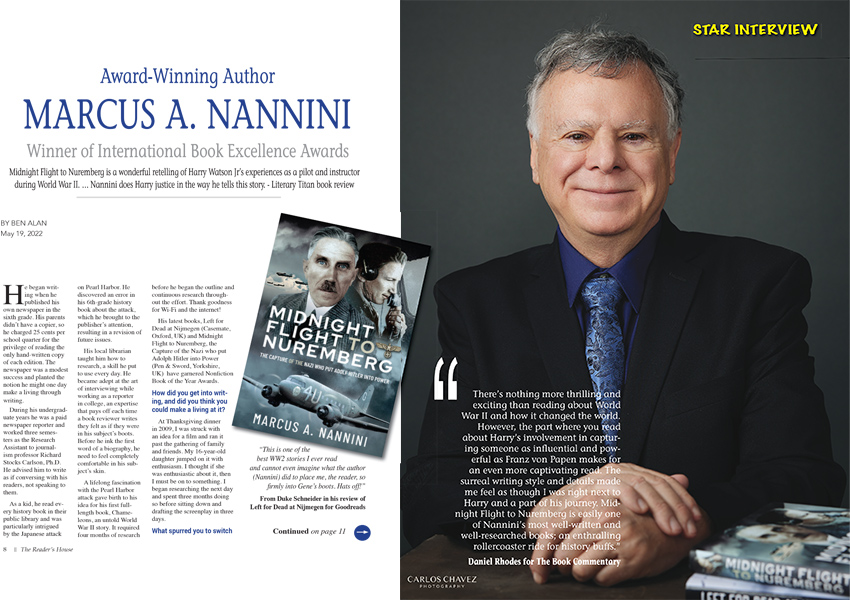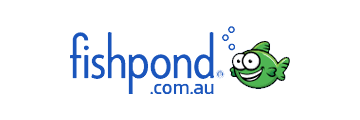Marcus A. Nannini
Share this Post:

Award-Winning Author
Marcus A. NANNINI
Winner of International Book Excellence Awards
By Ben ALAN
May 19, 2022
He began writing when he published his own newspaper in the sixth grade. His parents didn’t have a copier, so he charged 25 cents per school quarter for the privilege of reading the only hand-written copy of each edition. The newspaper was a modest success and planted the notion he might one day make a living through writing.
During his undergraduate years he was a paid newspaper reporter and worked three semesters as the Research Assistant to journalism professor Richard Stocks Carlson, Ph.D. He advised him to write as if conversing with his readers, not speaking to them.
As a kid, he read every history book in their public library and was particularly intrigued by the Japanese attack on Pearl Harbor. He discovered an error in his 6th-grade history book about the attack, which he brought to the publisher’s attention, resulting in a revision of future issues.
His local librarian taught him how to research, a skill he put to use every day. He became adept at the art of interviewing while working as a reporter in college, an expertise that pays off each time a book reviewer writes they felt as if they were in his subject’s boots. Before he ink the first word of a biography, he need to feel completely comfortable in his subject’s skin.
A lifelong fascination with the Pearl Harbor attack gave birth to his idea for his first full-length book, Chameleons, an untold World War II story. It required four months of research before he began the outline and continuous research throughout the effort. Thank goodness for Wi-Fi and the internet!
His latest books, Left for Dead at Nijmegen (Casemate, Oxford, UK) and Midnight Flight to Nuremberg, the Capture of the Nazi who put Adolph Hitler into Power (Pen & Sword, Yorkshire, UK) have garnered Nonfiction Book of the Year Awards.
How did you get into writing, and did you think you could make a living at it?
At Thanksgiving dinner in 2009, I was struck with an idea for a film and ran it past the gathering of family and friends. My 16-year-old daughter jumped on it with enthusiasm. I thought if she was enthusiastic about it, then I must be on to something. I began researching the next day and spent three months doing so before sitting down and drafting the screenplay in three days.
What spurred you to switch from writing screenplays to authoring nonfiction books?
While writing my first two screenplays, I realized the stories would make good books. That’s what started my book writing. But it was a couple of fluke incidents that turned me to nonfiction. While attending a Spirituality meeting, the older man next to me proved to be a World War II vet. His stories of flying B-24s in MacArthur’s South Pacific Theater led to a magazine article. I loved researching what the pilots endured to earn their wings. While writing that story, I bumped into an older gentleman at a local breakfast dive who was a teenager in Holland the day the Germans invaded. His recollections of spending five years running from the Gestapo evolved into another magazine story. Things ballooned from there, and I wrote a pair of nonfiction books of the year focused on World War II vets. I discovered I have a knack for placing the reader directly into the boots of my subjects, something in which I take great pride.
What is your current work-in-progress?
I’m halfway through a biography, tentatively titled Silvio. Love drives 15-year-old Silvio to leave his country in 1905 and seek his fortune in America so he might marry his childhood sweetheart. By 1921 he had a successful road construction company in Chicago, grossing six figures and two children. Silvio was wildly successful, helped numerous people start their own companies, and practically rebuilt several war-ravaged towns in Italy single-handed, earning him Italy’s highest civilian honors. He was a much-honored international philanthropist.
What do you find the most challenging in writing nonfiction?
Setting the time and place is my priority. I must take the reader back to a time and place, in some cases more than a century, and allow them to acclimate. Once established, I can successfully begin building the main character and bring the reader into his or her life. A couple of hundred hours in interviews and many more hours of research are required, but the work pays off!
What’s your favorite book no one else has heard of?
You might laugh at this one. I read it once or twice a year because it puts me into the right frame for writing war stories. The Eastern Front Day by Day, 1941-45 by Steve Crawford.
What books and authors have impacted your writing career?
That’s easy. The Eagle Has Landed by Jack Higgins. It was the progenitor to a long and very successful series of books, and I’ve read them all. I have modeled my thriller series following his formula.
You’re organizing a party. Which two authors, dead or alive, do you invite?
Well, that’s not much of a party, but if I were limited to two, I’d choose Antony Beevor and Jack Higgins. They would be a perfect merger of Nonfiction and Fiction. I admire these men the most.
What do you read when you’re working on a book? And what kind of reading do you avoid while writing?
If I have the time to read, it’s on topics that reinforce the time and place for my current project. I don’t have much free time for indulging in current book offerings. However, Leonardo Da Vinci comes up in my current biography project, so I have accumulated several books about him. It is fascinating reading. The man was amazing and very secretive.
Who is your favorite fictional hero or heroine?
There are two of them, both offspring of The Eagle Has Landed. Liam Devlin and Shawn Dillon. Both can be as cold-hearted as any antagonist and as human as Sister Theresa. They are loveable and despicable, which makes for intriguing plot lines.
Which writers working today do you admire most?
Dan Brown, Tom Clancy, Antony Beevor, Jack Higgins, John Ray Grisham Jr., David Baldacci, Dean Koontz, and Gillian Schieber Flynn.
Did any teachers or instructors have an impact on your writing?
I easily recall three moments that define me. The first came in 8th grade. I had to write a two-page book report, and I chose to write about The Fall of Constantinople-1453. I poured my soul into that report, six pages worth, only to discover a bright red “B+” in the upper right corner. I was devastated, so I asked my teacher, Grace Chamberlain, what I had done wrong. She told me I got bogged down in the details and ruined the story’s pacing. Since then, I am always aware of muddying the pace with too many details and work hard to keep my stories moving forward.
The second moment came near the end of my senior year in high school. My English Lit teacher took me aside and told me never to allow anyone to change my writing style. She said I had developed my own unique style and advised me to major in Journalism
During my junior year in college, the third event was the advice given to me by my journalism professor, Richard Stocks Carlson, about writing for the masses, not the “white tablecloth crowd.”
Follow Marcus A. Nannini
See Marcus A. Nannini featured on the cover of the Reader's House both print and electronic, available over 190+ countries and around 40.000 platforms, wholesalers, retailers and libririres... Here are some of them;
(Available afer third week of June)

US UK DE FR ES IT NL JP BR CA MX AU IN
USA CA UK IN AU HK JP PH SG TW TH AT BE CY EE FI GR IE IT TR
and more at UK STORES - USA STORES and GLOBAL
Click the button below to see interview magazine layout.
